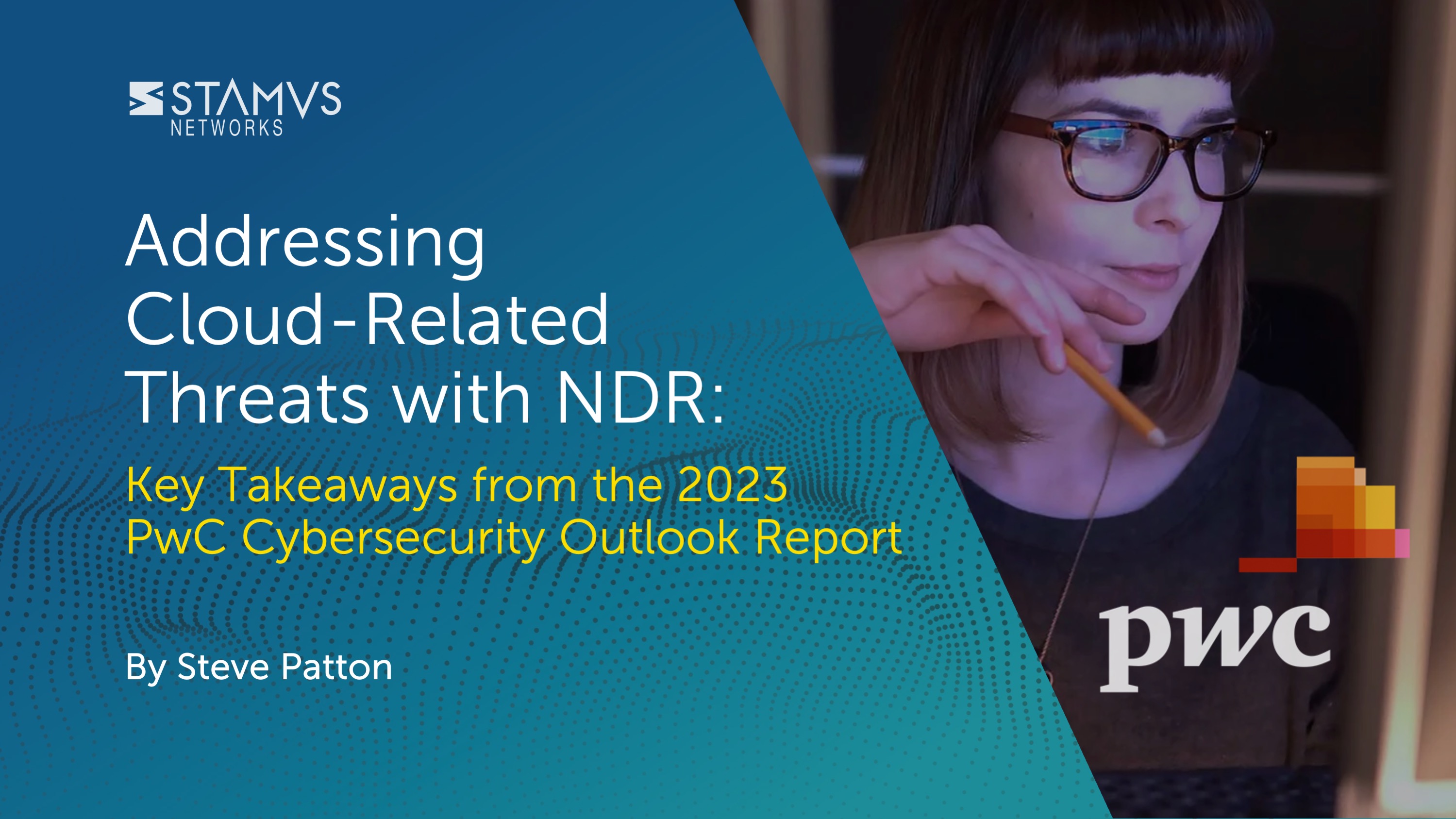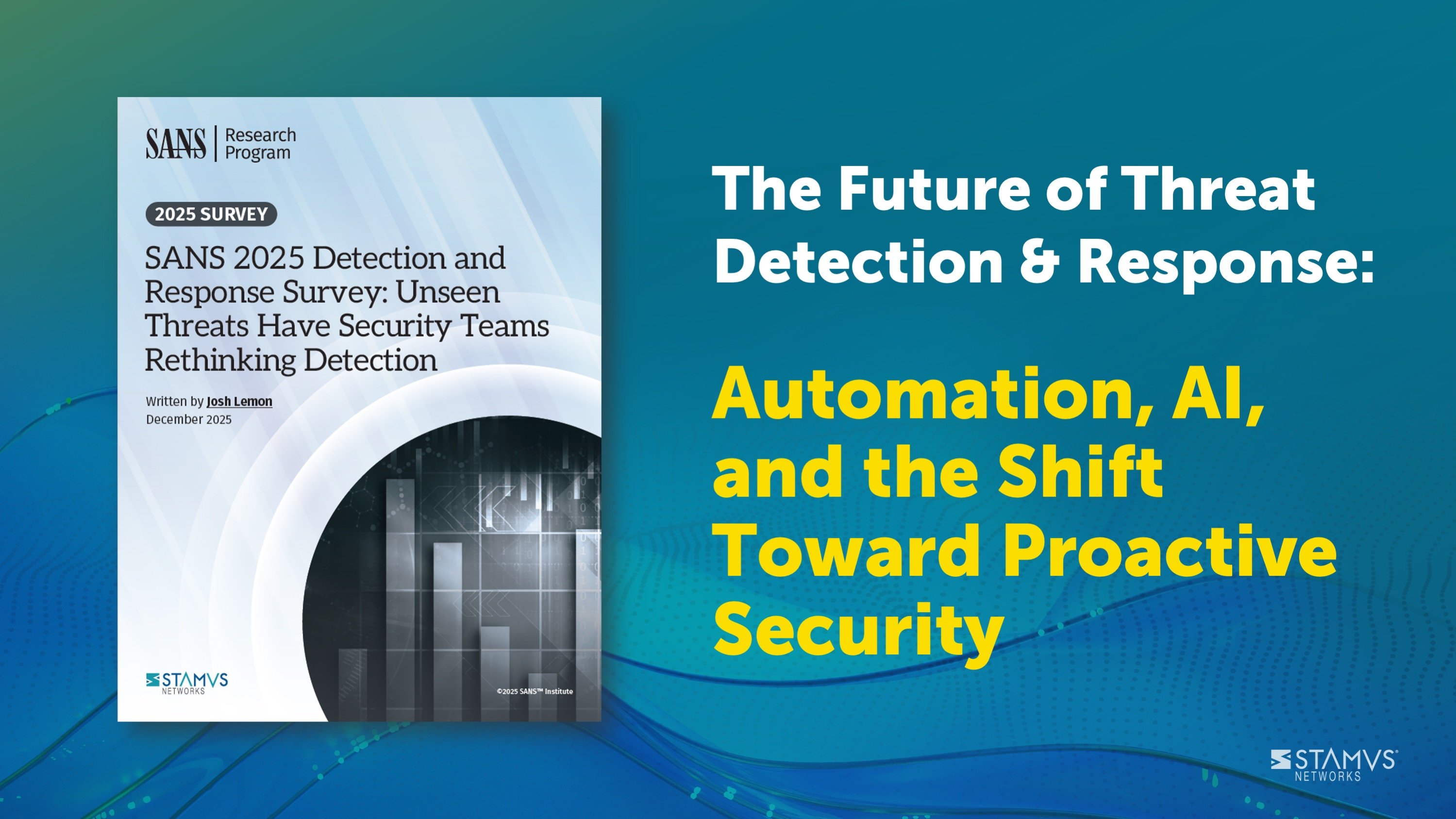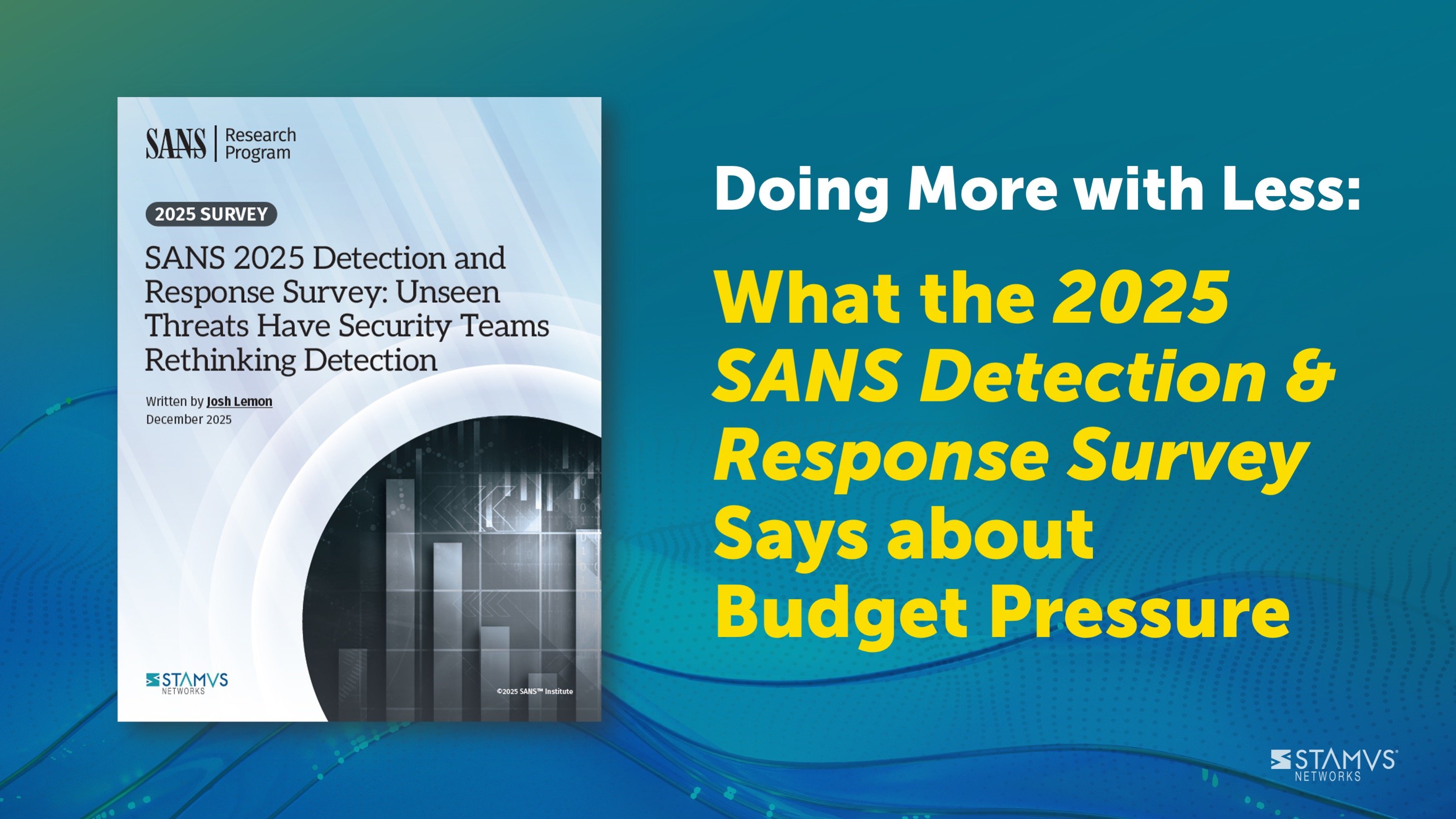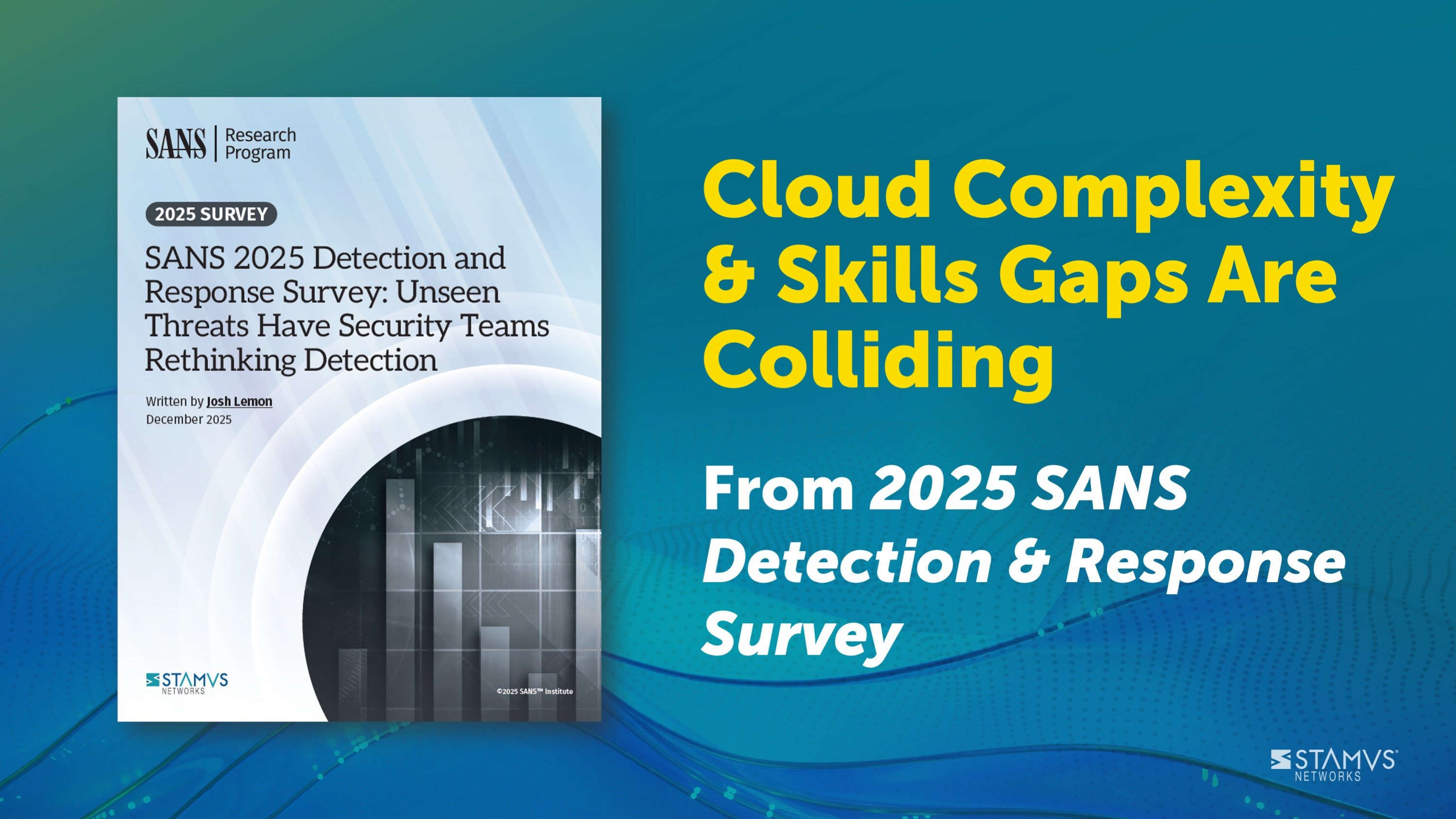In an era of rapidly advancing technology and digital transformation, the realm of cybersecurity is in constant flux. The PwC 2023 Cybersecurity Outlook Report has unveiled critical insights into the evolving threat landscape, making it abundantly clear that the challenges we face in 2023 are more formidable than ever. In my role as VP of Sales for EMEA at Stamus Networks, it is my job to navigate this ever-shifting terrain and provide perspective to our customers to shed light on how NDR solutions can offer answers to the questions raised by the evolving nature of our industry.
This year’s report tells a compelling story. It tells us that cloud-related threats are now at the forefront of concerns for UK senior executives, with 39% expecting these threats to significantly impact their organizations this year. It goes on to reveal that cloud migration is no silver bullet, and as organizations embrace the cloud, they must simultaneously embrace a proactive cybersecurity strategy.
This narrative speaks of cloud adoption, hybrid environments, and the need for proactive security measures. NDR is poised as a key player in this narrative, and throughout this blog post, we'll explore the relationship between the report's insights and the capabilities of NDR solutions.
Key Findings of the PwC Cybersecurity Outlook Report
The PwC Cybersecurity Outlook Report provides a wealth of insights into the concerns that weigh heavily on the minds of UK senior executives in 2023. At the forefront of these concerns is the increasing prominence of cloud-related threats. The report indicates that a significant 39% of UK senior executives anticipate substantial impacts from these threats this year, surpassing concerns related to more conventional threat sources. Cloud, it seems, has taken center stage as a source of anxiety for cybersecurity leaders.
The scope of PwC’s report extends far beyond cloud-related challenges however, encompassing a much broader picture. It certainly highlights an anticipated rise in attacks targeting cloud management interfaces, but it also discusses threats directed at Industrial Internet of Things (IIoT) and operational technology (OT). Simultaneously, it appears that long-standing adversaries like business email compromise, ransomware, and 'hack and leak' tactics continue to loom large in the minds of organizational decision-makers.
In a somewhat encouraging twist, the report unveils that 59% of UK organizations plan to boost their cybersecurity budgets this year. This shift reflects a growing understanding within organizations of the importance of cybersecurity investments to protect their digital assets and operations.
However, the report's revelations are accompanied by a stark reality. It underscores the potential financial and reputational damages stemming from cyber attacks or data breaches. Astonishingly, over a quarter of global CFOs surveyed shared experiences of data breaches which cost their organizations more than $1 million in the past three years.
These findings set the stage for our exploration of how Network Detection and Response (NDR) solutions can provide strategic advantages in this evolving threat environment.
NDR Solutions in a Changing Landscape
In cybersecurity, adaptability and innovation are key, particularly when dealing with a dynamic threat landscape. In this context, Network Detection and Response (NDR) solutions play a pivotal role, offering organizations a flexible approach to safeguard their digital assets.
With cloud-related threats taking center stage, Network Detection and Response solutions emerge as a key player in an organization's defense strategy. NDR actively monitors the data exchanged between users, applications, and services, providing real-time insights into potential threats from the single source of truth across multi-cloud environments – the data packets. This level of active monitoring is essential in an environment where cloud-related risks have become top concerns and native cloud security monitoring tools may be non existent or only provide basic capabilities
With cloud adoption, it’s no surprise that the cybersecurity landscape is becoming increasingly characterized by hybrid environments, combining both on-premise and cloud assets. NDR solutions shine in such complex environments where today often multiple tools are used to give a partial view of security across different environments (on-prem, cloud, IT, OT). NDR bridges the gap, ensuring uniform security across multiple domains. As the PwC report emphasizes, NDR's role during cloud migrations is particularly valuable. It safeguards assets in transition, guaranteeing data integrity and network security.
The Minimum Effective Toolset and Proactive Security
Defense strategies are shifting. We're witnessing a transition from a “patch-and-fix” mindset to a more proactive approach, where organizations aim to stay ahead of threats rather than merely reacting to them. In September I attended the Gartner Security and Risk Management Summit in London, and this evolution was emphasized there as well. One of the more intriguing topics discussed at that event was the concept of the “Minimum Effective Toolset", which appears to be emerging as a strategic cornerstone in this shift.
In the simplest terms, this concept emphasizes the importance of receiving the maximum output from the fewest number of inputs. It is a common misconception in our industry that more tools or systems or controls will equate to better protection of our assets. What we actually find is that the more we simplify our strategy to use tools that simply work as intended, the more effective our outcome is.
The connection between these ideas may not be apparent. How does a minimum effective toolset promote the evolution to more proactive security measures, and how do proactive security measures support the growing need to mitigate risk associated with digital transformation?
Look at it this way:
By consolidating solutions into a minimum effective toolset, your organization is free to pursue maximum impact from a minimal number of tools, giving your security team more time to proactively stay ahead of threats and in turn satisfy the need to mitigate the risk associated with ongoing digital transformation.
PwC’s report provides a set of startling statistics:
- 64% of UK senior executives have not fully mitigated the risks of cloud adoption
- 68% of UK senior executives have not fully mitigated the risks of increased digitization of delivery mechanisms to customers
- 64% of UK senior executives have not fully mitigated the risks of increased digitization of the supply chain
Network Detection and Response can fill in the gaps in this need for mitigation. By proactively monitoring network traffic and communication, NDR solutions go beyond traditional cybersecurity tools. They actively hunt for threats, providing real-time insights into emerging risks. PwC’s findings align with the idea that cybersecurity is not merely about responding to incidents, but rather assuming that incidents will occur and embedding resilience capabilities to withstand disruptions. NDR solutions fit this mold perfectly. They allow organizations to anticipate threats, thereby reducing the risk of data breaches and other security incidents.
If you are curious about the concept of Cyber Resilience, we recently published a blog post detailing it in depth.
The Cloud Migration and Cybersecurity Conundrum
There's a growing misconception that migrating to the cloud inherently resolves all cybersecurity issues. However, this report highlights a very different reality. It emphasizes that cloud migration doesn't eliminate the need for effective cybersecurity measures and controls; it merely changes the context in which these measures and controls are applied.
The PwC report sheds light on the necessity for consistent and effective data protection, regardless of the operating environment. Whether an organization's assets reside on-premise or in the cloud, cybersecurity remains a fundamental concern. Just because your data moves from one place to another does not negate the fact that it still needs effective protection. This aligns with the broader industry perspective that the cloud doesn't inherently provide security; rather, it requires shared responsibility, where both cloud services providers and organizations must actively contribute to ongoing cybersecurity efforts.
In this context, Network Detection and Response (NDR) solutions serve as a linchpin in an organization's cybersecurity strategy. They actively monitor network communication, the backbone of digital operations, in both on-premise and cloud environments. NDR solutions ensure data and network integrity by providing real-time insights into potential threats, no matter where they originate.
Conclusion
The PwC Cybersecurity Outlook Report offers a comprehensive view of the ever-evolving threat landscape in 2023. It underscores the increasing prominence of cloud-related threats, the persistence of traditional adversaries, and the necessity of proactive cybersecurity measures.
The report's findings emphasize the importance of adaptability, strong leadership, advanced data analytics, and employee cybersecurity awareness in navigating this dynamic landscape. In this context, Network Detection and Response (NDR) solutions emerge as strategic assets, aligning seamlessly with the report's insights.
NDR should play a pivotal role in addressing the challenges of cloud adoption and digital transformation. As organizations navigate the complexities of hybrid environments and cloud migration, NDR provides a way to safeguard assets.
Network communication is the single source of truth an organization can rely on, and NDR actively monitors and protects this critical element. As highlighted by PwC’s report, maintaining data and network integrity truly is paramount in protecting organizational assets and operations.
As we move forward, it becomes evident that NDR is the key to not only maintaining this single source of truth but also staying ahead of evolving threats. The PwC report's insights and NDR's capabilities combine to offer a roadmap for organizations looking to strengthen their cybersecurity posture and ensure their long-term success in a digital era defined by adaptability, resilience, and proactive measures.
If you have questions or need guidance on how NDR can strengthen your organization's security posture, please reach out to me. I’m here to support you on your journey to a more secure and resilient digital future.
To stay updated with new blog posts from Stamus Networks, make sure to subscribe to the Stamus Networks blog, follow us on Twitter, LinkedIn, and Facebook, or join our Discord.







